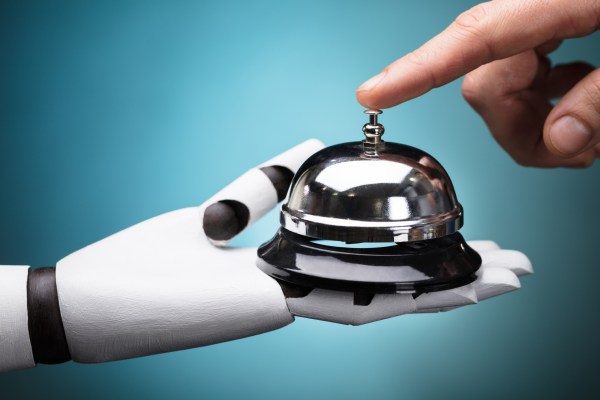The global help desk automation industry is expected to grow to $11 billion by 2023 as support automation empowers companies to serve their customers more effectively. By automating repetitive tasks and FAQs, companies give employees more time to spend on more human tasks that involve building relationships and generating revenue.
Customers are also increasingly valuing self-service options. Chatbots allow customers to quickly address concerns at any time of the day without needing to pick up the phone. However, adding a human touch to that process will always be helpful.
Consider these three ways to humanize your support automation.
Your chatbot will feel more human if its responses are thoughtful rather than robotic.
Give your bot a name and personality in line with your brand
Your bot is an extension of your company and is likely to be the first interaction a customer will have on your website or app. Use this opportunity to showcase the qualities your customers want to encounter. Design the chatbot to introduce itself with a memorable name that fits into your brand. Consider the voice your company uses across channels and incorporate the tone into your chatbot’s scripting. Feel free to include jokes or emojis — but only if they are consistent with the voice of your brand.
Your chatbot will feel more human if its responses are thoughtful rather than robotic. An AI-powered chatbot can ask more open-ended questions, which frees the user from the restraints of a few generic options. Your bot should use the customer’s name in conversation and explain if it’s searching for an answer or needs additional details to make the conversation feel more natural. Creating that comfortable dialogue will humanize your chatbot and separate it from the crowd.
Your bot’s personality should include the ability to react to written expressions of emotion. It should ask clarifying questions and confirm the details of a customer’s problem or question. Such guided conversations help a customer feel heard and understood. A natural-sounding diction and a personality that matches your brand will keep customers and potential customers from closing the tab.
Connect to a knowledgeable human for help
For a chatbot to be effective, it’s important that it asks follow-up questions and respond in thoughtful ways, but it should also be able to escalate a problem to a human expert. A chatbot that’s a dead end is not a true solution. When a customer thinks you’ve replaced traditional, human customer service with an inadequate substitute, they’ll feel undervalued.
A crucial feature of an effective chatbot is its ability to sort between questions it can handle and questions that need the nuance and expertise of a human. To do that, your support automation solution must be equipped with both chatbots and live chat. Every time a human steps in to assist, the chatbot should learn from the responses, adding to its knowledge and making it more capable of addressing future customer needs.
A chatbot that works as part of a support automation platform can reach out to a human, either connecting the customer to an expert immediately or communicating the need so someone can reach out as soon as possible. In both instances, support automation eases the burden on the customer so they don’t have to follow up on their own, or worse, start the process all over again.
Determine which tasks should not be automated
Certain inquiries need human attention. By implementing a chatbot to deflect 90% or more of all inquiries, your team will be better equipped to handle the tasks that should not be automated. Your team can focus on creating value instead of answering questions with set responses. A robust chatbot centers the human experience. It allows your team to be available for customers because they aren’t spending time on fact-finding, which support automation can handle.
For example, your chatbot should not train incoming team members. Managers and teams should conduct training so new personnel feel connected to colleagues and valued. The best training use of your chatbot is equipping it with answers to a new team member’s FAQs so they can get instant responses to questions such as: “What are the company holidays?“ or “How do I change my 401(k) allocation?“
Such embedded assistance gives incoming team members more confidence as they settle into their new roles. A chatbot that works as part of your internal support automation platform can provide ongoing support to new team members long after training has ended.
Your support automation should get better with use
Humanizing your support automation is an ongoing process. The best thing about an AI-driven chatbot is its ability to learn and improve its interactions with customers as it is used. In addition to the knowledge it gains from each interaction, built-in feedback prompts let customers tell you if an automated experience was effective, or if there’s more work to be done.
Lastly, understand that your chatbot won’t always get it right, and that is a very human feature to have.
